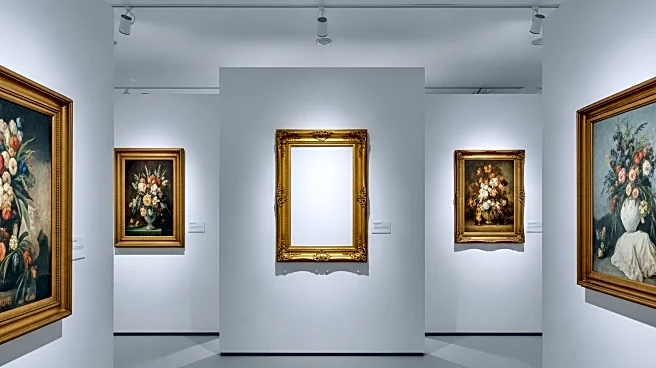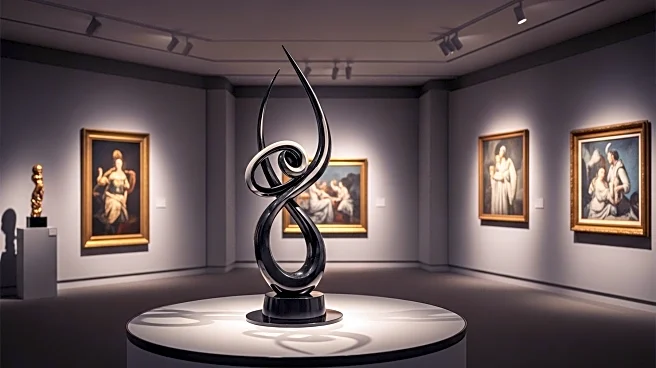What's Happening?
Scientists have identified the origins of the blue color in Jackson Pollock's painting 'Number 1A, 1948,' confirming the use of a synthetic pigment known as manganese blue. This discovery was made through a study that involved analyzing paint samples from the artwork using laser technology to determine the chemical composition. The painting, which is part of the Museum of Modern Art's collection in New York, features Pollock's signature style of paint drips and splatters. The identification of manganese blue marks the first confirmed use of this pigment by Pollock, adding a new dimension to the understanding of his artistic techniques.
Why It's Important?
The confirmation of manganese blue in Pollock's work provides valuable insights into the materials and methods used by one of the most influential figures in abstract expressionism. This discovery not only enhances the historical understanding of Pollock's art but also aids in the conservation efforts of his paintings. By knowing the specific pigments used, conservators can better preserve the vibrancy and integrity of the artwork. Additionally, this finding contributes to the broader field of art conservation and authentication, offering a scientific basis for distinguishing genuine works from forgeries.











